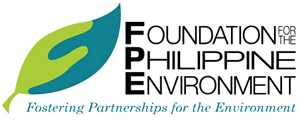News
Ecosystem Needs to Recover Too from the Yolanda Onslaught
Posted on November 20, 2014Restoration in Yolanda-hit areas does not only concern the provision of food and basic necessities, reactivation of government services and the resumption of socio-economic activities. It must also be understood that rebuilding human lives is intertwined with restoring the health of what was damaged too in nature.
From the perspective of fisherfolk and farmers whose lives have always depended on the sea and the arable soil, boats and seeds for new crops will have to wait till the fishes find a home in restored mangroves and corals, and the trees make the land fertile once again.
The Foundation for the Philippine Environment (FPE), alongside its partners and stakeholders recognize that as people begin to move forward towards creating a new life, attaining food security using sustainable means alongside the restoration of healthy and diverse ecosystems becomes paramount.
According to FPE Chair and CEO Liza Osorio, “Through damage assessment strategies with a core focus on biodiversity conservation and sustainable development (BCSD), and disaster risk reduction and management (DRRM), the FPE has set in place programs to rehabilitate damaged ecosystems, and build climate and disaster-resilient communities in Gigantes Islands and Guiuan in the Visayan region.”

Partners from Guiuan Development Foundation, Inc. monitor typhoon impact to the mangroves of Guiuan, Eastern Samar. (Photo: FPE)
Gigantes Islands
Famous for its Tangke Saltwater Lagoon, Gigantes is an offbeat tourist destination with idyllic beaches and sandbars, limestone cliffs and aquamarine waters. The islands are located at the northeast coast of Panay.
Gigantes Islands belong to a region of 128 Key Biodiversity Areas (KBAs) for 419 endemic species of fish, reptiles, amphibians and mammals, 209 of these are threatened. Two trigger species have been listed as critically threatened and endangered, with four falling into the irreplaceable criterion.
At the height of supertyphoon Yolanda, it was reported that caves, where endemic species of geckos and frogs thrive, were used as refuges. The extent of disturbance to these endemic species and the caves is now being determined by FPE and Dr. Arvin Diesmos of the National Museum of the Philippines.
“One of the main challenges that the Gigantes Islands face post-Yolanda is that very little aid has been channeled to it, with most of the relief operations and goods primarily going to Samar and Leyte. The gravity of the effects of the storm to Gigantes’ people and infrastructure, much less the environment, has not been fully assessed,” said Osorio.

The Tangke Saltwater Lagoon in Gigantes Islands. (Photo: CODE-NGO)
Guiuan
In the aftermath of the storm, the already fragile state of biodiversity in the area has become more severely compromised. Much of the islands’ habitats have been totally destroyed. Similarly, corals have been crushed by the deluge.
A site inspection by Dr. Jonathan Anticamara through a research supported by FPE, revealed coral reefs were also wiped out in a few islands severely impacted by Yolanda's wind. Reefs mainly comprised of branching coral species were greatly devastated. Damage was so intense that filamentous algae took over most of the reef cover according to Dr. Anticamara’s research report in 2013.

The coral reefs of Pearl Island in Guiuan, Eastern Samar before (left) and after (right) supertyphoon Yolanda. (Photo: Dr. Jonathan Anticamara)
Fortifying Guiuan and Gigantes
In response to the environmental damage wrought by Yolanda, the FPE is now implementing ecosystem rehabilitation measures in these areas. Three researches are now available as baseline for ecological restoration, namely: (1) Rapid Community-based Assessment and Planning of Mangrove and Beach Forest by the Southeastern Samar PO Consortium, (2) Status Assessment of the Population and Habitat of Threatened Endemic Limestone Karst Frogs and Lizards of Gigantes Islands by Dr. Diesmos, and (3) The Need to Quantify and Understand Reef Biodiversity in the Philippines for the Benefits of Filipinos and Assessing the Impacts of Super-Typhoon Yolanda on Coral Reef Diversity in Eleven Selected Reefs Sites of Eastern Samar by Dr. Anticamara. Dr. Jessie Manuta, an expert adviser of FPE and former trustee, is also developing a Framework and Roadmap on CCA & DRRM in FPE-assisted communities in Guiuan and Gigantes.
______________
All these researches were presented during the FPE-organized event on Partnership Building for Integrating Ecological Restoration in CCA & DRRM on November 25, 2014 at 3:00PM at the Astoria Plaza Events Place in Pasig City. Copies of the reports may be requested from info@fpe.ph.

 DISPLAY CALENDAR
DISPLAY CALENDAR
 Read Policy Briefs
Read Policy Briefs
 View Our Partners
View Our Partners
 Access Grants MIS
Access Grants MIS
 Login to Webmail
Login to Webmail